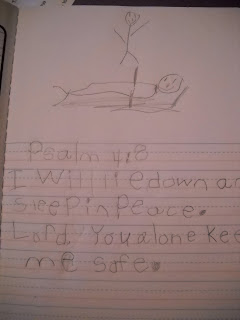Last month the kids and I were wanting something to do, and we had an abundance of baby pinecones and a bunch of acorns. At first we thought about making acorn pumpkins, but we did that last year. So after a short search online, I ran across a picture of these cute acorn/pinecone winter guys. I ran with that idea and we ended up creating a pinecone skiier, snowboarder, and one cyclops. 

Here's how we made our little guys.

Scissors
Hot Glue Gun
Paint
Paintbrushes
Pom-poms
Brown paper sacks for work space
Permanent marker
Wiggle eyes
Colored yarn
Popsicle sticks
Toothpicks
Foam shapes
Pipe cleaners
Baby pinecones
Acorns with tops
Any other decorative items you want
Process:

We started by picking out pinecones and acorns. You need to make sure that the top of your acorn fits well so that it's easier to glue. If you want a hat with a pom-pom on top, make sure your acorn top has a stem. I then used scissors to snip the bottoms of the pinecones so they'd sit flat. We then filled the top of the acorn hat with hot glue and stuck it to the acorn head. If you want hair, you will want to put the hair on top of the acorn before sticking the hat on top. We used pulled apart pop-poms for hair.
Once the hat is dry, you can attach the acorn head to the top of the pinecone with hot glue. Hold it until dry. We then attached the pom-poms to our hats and added self-stick googly eyes and drew mouths with black permanent marker. Basically we had what you see above. Then we tied some colored yarn around the necks for scarves, although my daughter used silver sparkle ribbon for hers.
After that, I cut pipe cleaners for the arms and used a little hot glue to hold it inside the pinecone. I tried just wrapping it around but it kept coming out, so you should definitely glue the arms inside the pinecone. The last part was making the skis and snowboards. My kids decided they wanted snowboards instead of skis, so I just hot glued two different colored craft sticks together. Once they dried, I hot glued the pinecones to the craft sticks. Both of my kids painted their acorn hats, and my daughter attached a sparkle heart to hers for a bling-bling shirt. My son's is a cyclops with one eye and no arms and orange hair that some may say resembles Sean White's style.
To make the skis, I just broke a bit off of two craft sticks and glued the pinecone down. I used two circle craft pieces to make the round parts on the skis and just stuck toothpicks through those and wrapped my acorn guy's 'hands' around the sticks. We had a lot of fun making these. You need a good hour or so to make more than one, so this is a great snowy or rainy day craft. Here are the finished products -mine is the skiier, my son's is the Sean White cyclops, and my daughters is the glittery snowboarder with her arms up like "whoo hoo!!" :











































